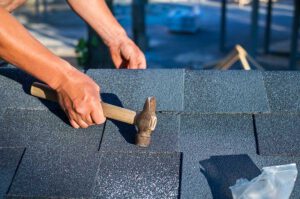Best Utah Mortgage Lenders are financial institutions that lend money for a real estate purchase or refinance. They follow specific borrowing guidelines and set the terms, interest rate, and repayment schedule.
They can be banks, credit unions, non-bank lenders, or mortgage brokers. You’ll want to shop around with each one to find the best offer.
There are banks that offer mortgage loans, and there are also other financial institutions that specialize in home financing. Many lenders focus on one type of loan, while others offer a range of different types of credit, such as auto loans, personal loans, and student loans. If you’re shopping for a mortgage lender, it’s generally smart to apply with at least three different lenders. That way, you can compare terms and rates between different lenders.
In the world of home financing, there are four categories of mortgage lenders: banks, credit unions, non-bank lenders, and brokers. Each category has a slightly different set of requirements. Choosing the right mortgage lender can save you money and time in the long run.
Banks provide a variety of mortgage products, including 30-year fixed-rate mortgages, 15-year fixed-rate mortgages, adjustable-rate mortgages (ARMs), government-backed mortgages, and jumbo mortgages. Some banks also provide home equity loans. Banks generally require borrowers to submit verification of income, credit documentation, and assets to assess their eligibility for a loan.
Credit unions are another great mortgage lender option. They’re usually non-profit organizations, so they don’t need to make a huge profit on each mortgage they lend. Because of this, they typically have some of the lowest mortgage interest rates on the market. However, not everyone can join a credit union, and those that do might have a limited number of mortgage lending options available to them.
Credit Unions
Credit unions are a type of financial institution that is owned by its members. They operate on a not-for-profit basis, which means that any profits made by the credit union are reinvested into projects and services that benefit the community and its members. This is a key differentiator from banks, which typically funnel profits to their shareholders. This allows credit unions to offer lower interest rates on savings accounts and loans.
If you’re interested in applying for a loan with a credit union, make sure that you meet the eligibility requirements. These vary by credit union but generally include a minimum deposit amount and a membership fee. You should also check whether the credit union offers prequalification, which can help you determine which loan terms and rates may be most suitable for your needs without having to impact your credit score.
Another reason to consider a credit union is that they tend to have a more personal connection with their members than traditional banks. This is because they are often local or regional and usually serve a specific community. This can help them provide a more tailored service and ensure that they are supporting local causes. Additionally, they can also offer higher APYs on savings accounts and lower rates on loans than banks can.
While credit unions still charge fees, they tend to be less restrictive than banks in terms of account minimums and transaction limits. They can also offer better rates on savings accounts and loans because they aren’t required to maximize profits. Additionally, credit union deposits are insured up to $250,000 by the National Credit Union Administration (NCUA), which is backed by the full faith and credit of the United States government.
Credit unions are not available everywhere, so be sure to research the ones that serve your community before you decide to apply for a loan. You can find information about the nearest credit unions by using a service like Bankrate’s credit union locator. Alternatively, you can try searching for one that serves your community or industry. For example, if you work in the medical field, you can join the Richmond Federal Credit Union, or if you’re an active-duty member of the military or a family member of a servicemember, you can join the Navy Federal Credit Union.
Non-Bank Lenders
Non-bank lenders offer a powerful alternative to banks for mortgage lending. They are regulated by the Australian Securities and Investments Commission (ASIC) and must comply with responsible lending laws. They also have lower operational costs than banks, which can help them offer competitive loan products. Non-bank lenders are an excellent option for borrowers who want to avoid the hassle of dealing with large banks.
Since the Global Financial Crisis, banks have been subject to stricter regulatory oversight. This has caused some of them to get out of the mortgage market or minimize the number of mortgages they lend. As a result, many potential borrowers have turned to non-bank lenders for their mortgage financing needs.
The majority of these lenders are specialists in providing mortgages and other financial services. They focus on borrowers and markets that have been overlooked by banks, providing a strong alternative for those who don’t fit the traditional borrower mold. They compete with banks based on loan turn-around times and customer service.
Non-bank lenders typically originate their loans in the wholesale money market. This is because they don’t rely on depositors to fund their mortgage lending, which means they must have access to low-cost funds. In addition, these lenders tend to have higher exposure to risky borrowers than banks.
This makes them more sensitive to negative liquidity shocks. Their business models can also involve liquidity and maturity mismatches, and they often use leverage. As a result, they can exhibit procyclicality and may transmit domestic credit contractions to a greater extent than banks.
Despite these risks, non-bank lenders have become increasingly important players in the lending industry. Their innovative and flexible approach to the mortgage lending process has made them attractive to borrowers seeking an alternative to bank-dominated mortgage markets. Non-bank lenders have also taken the lead in streamlining the mortgage loan application process, allowing borrowers to complete much of the paperwork online.
It will take time to determine the full impact of APRA’s macroprudential policy changes on mortgage lending, especially non-bank residential and commercial loans. However, early evidence suggests that the share of high-LTI mortgages has increased somewhat following APRA’s increase in the serviceability buffer.
Mortgage Brokers
Mortgage brokers are independent professionals who work with a variety of lenders to find the best loan for their clients. They can save borrowers time by comparing rates, fees, and terms from different lenders. They also have the ability to get loans from wholesale markets, such as Fannie Mae, that might not be available to the general public.
Borrowers can choose to use a broker when they wish to shop for a mortgage without the help of a real estate agent or when their credit needs work, such as paying off debts to improve their debt-to-income ratio or accumulating a longer history of on-time payments. The process usually begins with the client approaching the broker, who then approaches several lenders to provide options.
A broker will typically collect documents such as pay stubs, tax papers, and bank statements to submit to the lender for underwriting. The lender then approves or denies the mortgage loan based on the borrower’s financial profile and mortgage market conditions.
Some mortgage brokers charge a fee to the borrower to cover their expenses, while others are compensated by the lenders they approach for bringing in business. When a broker charges a fee, it can add up to the cost of a loan over the term of the mortgage and may be reflected in the interest rate.
Many mortgage brokers work with aggregators, which act as “middlemen” between the broker and the lenders. This allows the broker to gain access to a larger panel of lenders and take advantage of aggregators’ administration support, industry compliance updates, and ongoing training.
Although mortgage brokers can be a great resource, it’s important for borrowers to consider whether they need their services. The main reason is that they often have a limited view of the mortgage market and may only recommend lenders with whom they have an existing relationship. In addition, they may not be able to recommend a lender if the borrower has special circumstances, such as being self-employed or having a high debt-to-income (DTI) ratio. In such cases, a loan officer at a specific institution may be able to provide better assistance.



